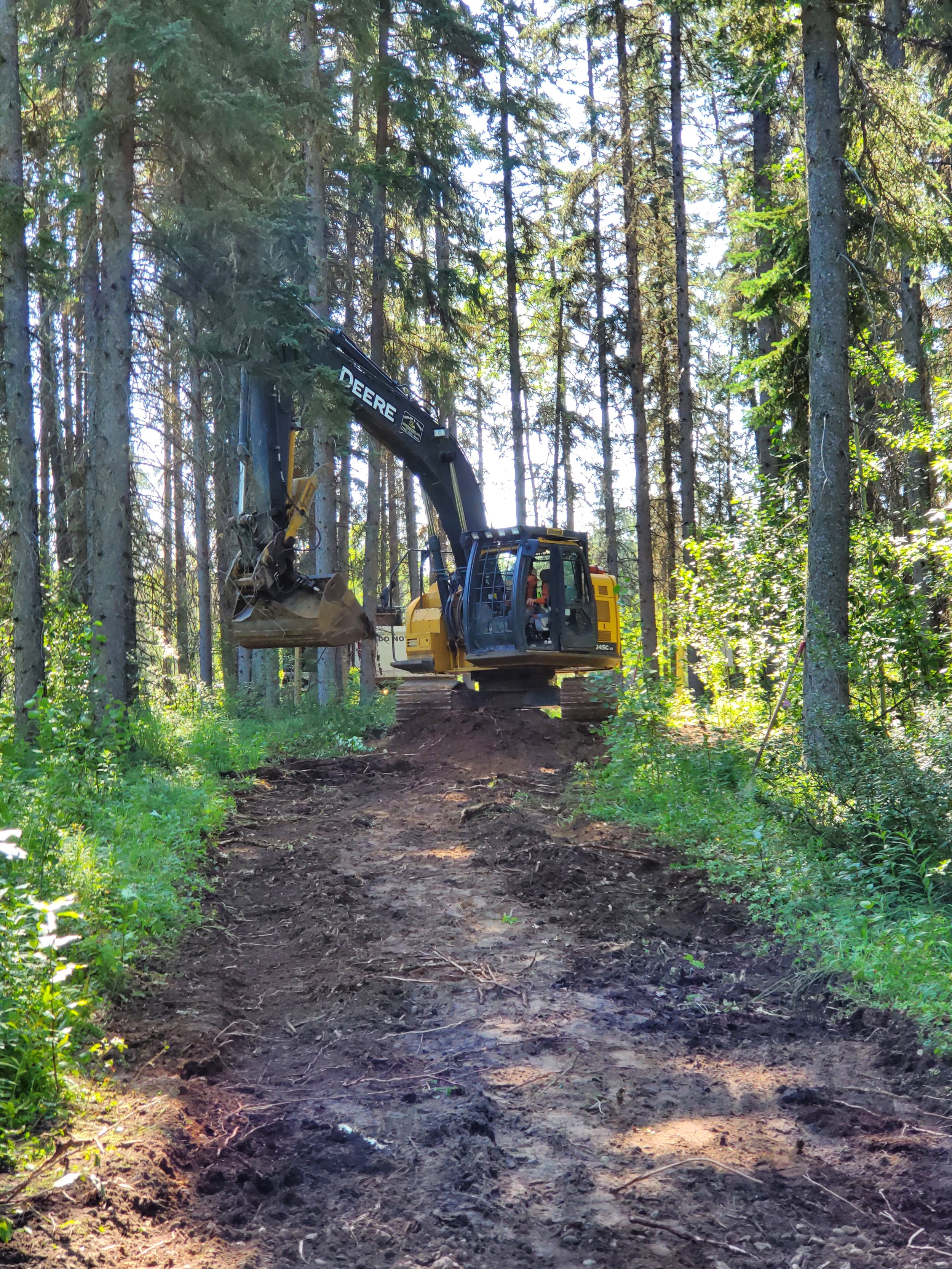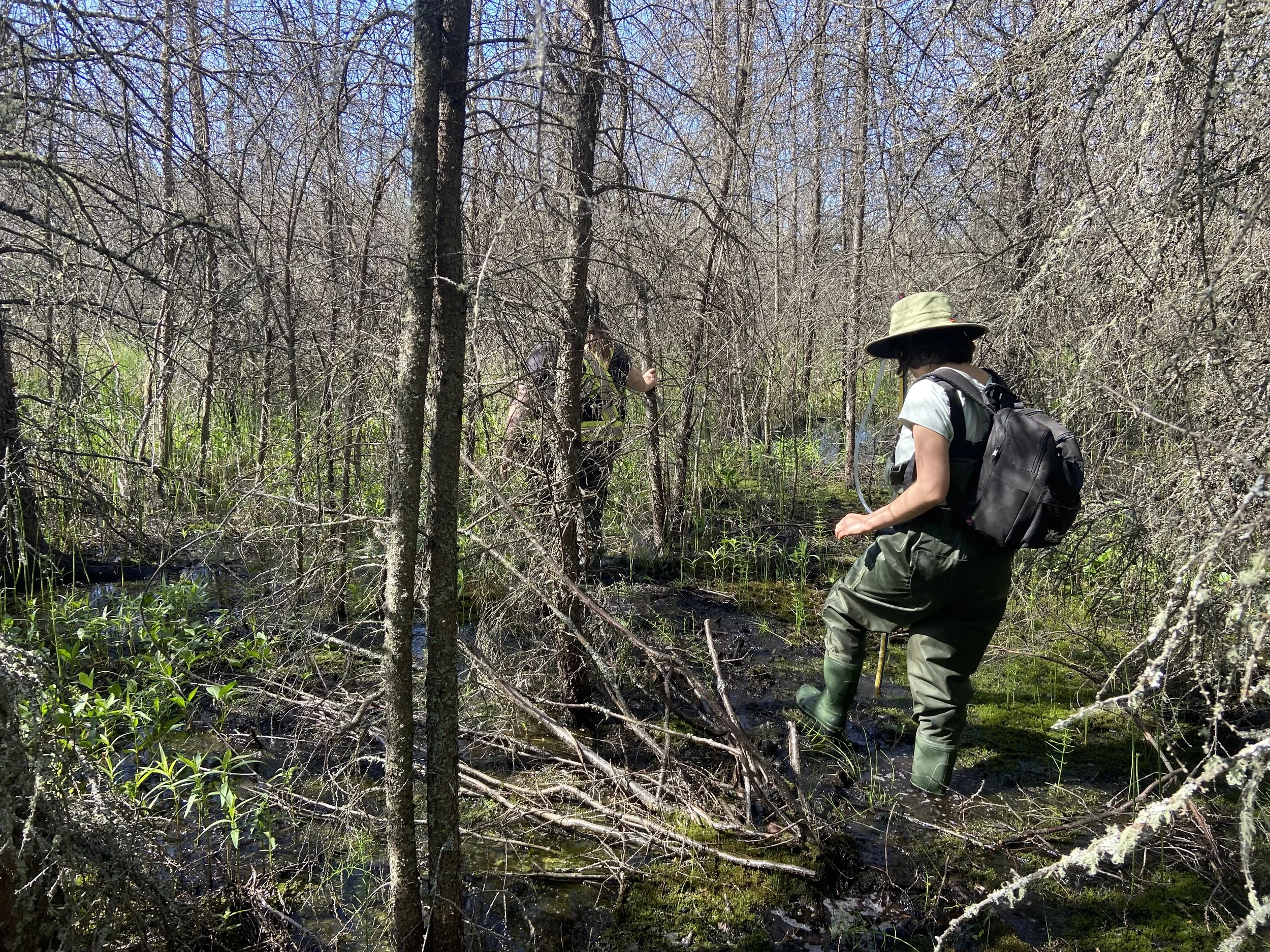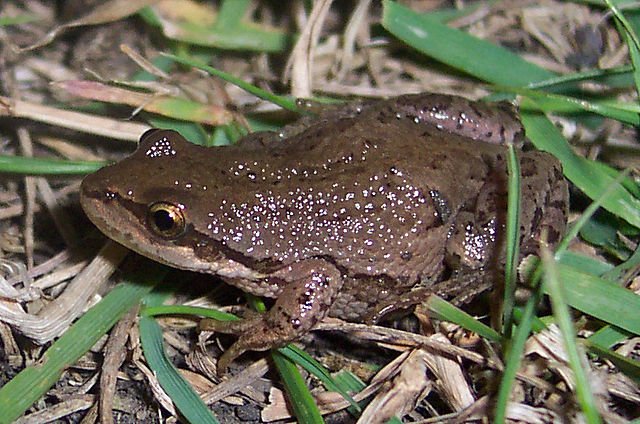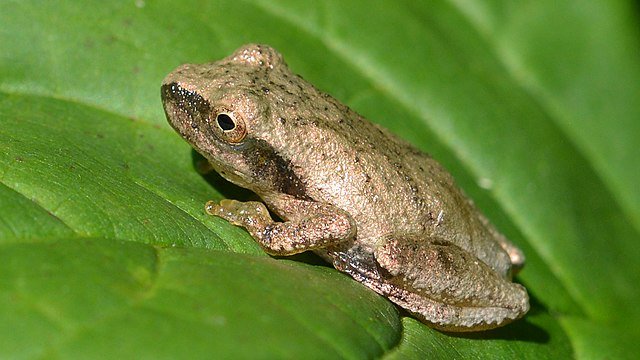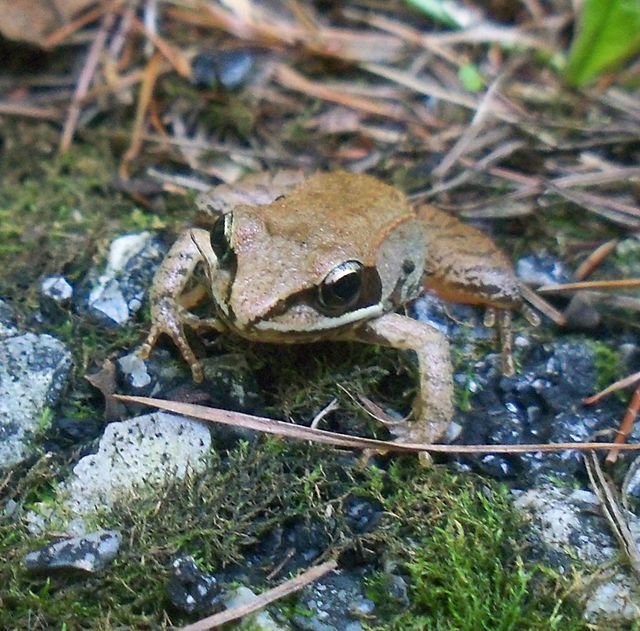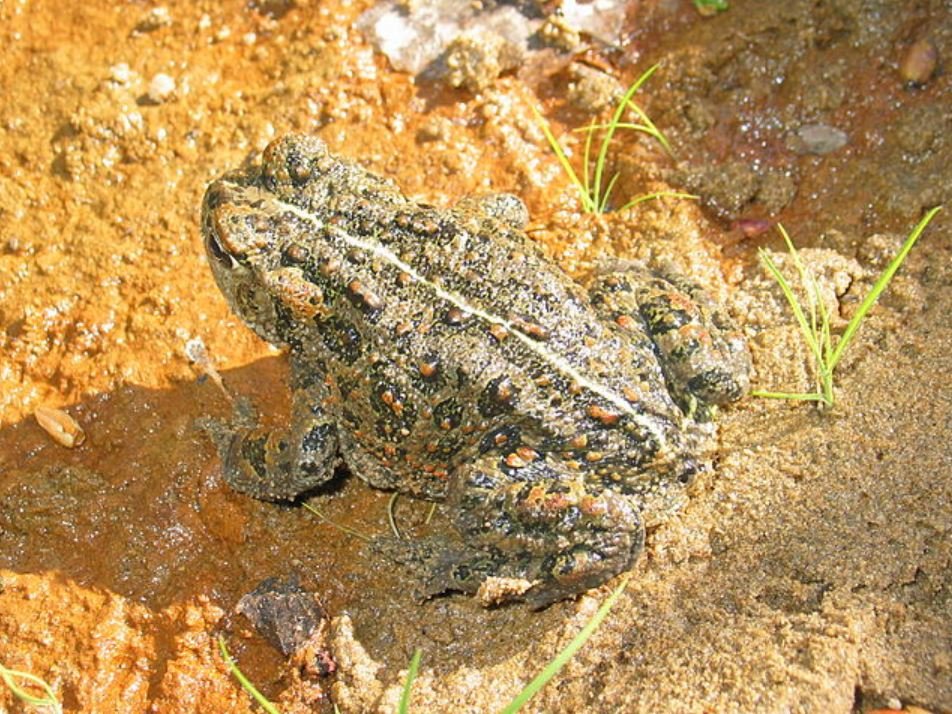Chorus of the Wetland: ABMI Amphibian Monitoring at the Wetland Centre
/Have you ever gone for a walk near a wetland in the summer, and come across a chorus of frogs calling out to each other? It was likely the aptly named boreal chorus frog. With scientific devices called autonomous recording units (ARUs), researchers can record these calls and estimate something called amphibian species abundance—the number of individuals of each species in the area. During the summer of 2020, the Alberta Biodiversity Monitoring Institute (ABMI) put out some ARUs at the Wetland Centre in Evergreen Park, county of Grand Prairie, to try and answer just that: how many different amphibian species were there, and how abundant were they? Read on to learn how these recorders were used to figure out which amphibians are a part of the wetlands’ chorus!
Figure 1: Autonomous recording units (ARUs) mounted to trees (ABMI)
You might remember this from science class, but a quick refresher: amphibians are vertebrates that live in water and on land. They are ectothermic, which means they are unable to regulate their body temperature and must move between warmer and cooler environments to change their body temperature. They also have very thin skin that absorbs oxygen, water, and chemicals. For this reason, amphibians are quite sensitive to human activities that change their habitat, and are known as ‘biological indicator species,’ which means their health reflects the health of waterways, wetlands, and uplands they live in. Frogs, salamanders, and toads are the 3 types of amphibians found in Alberta.
The boreal chorus frog is a small frog commonly found in wetlands across Canada, even in habitat outside of the boreal, despite its name! This frog has the unique ability to freeze solid in the winter and hop back to life come springtime. Other amphibian species that are known to exist around Grand Prairie are the wood frog, which is distinguishable by a white stripe on its upper lip, and the western toad, which is larger and bumpier than the frogs described above (Figure 2).
The boreal chorus frog looks very similar to the western chorus frog, the spring peeper, and the pacific tree frog, all of which are not found in Alberta, but in Southwestern British Columbia. We bring this up because it’s a good example to show that the best way to differentiate these frogs is by their call: the boreal chorus frog has a shorter and faster call than that of the western chorus frog. This is why ARUs are so important in amphibian research.
Figure 2: Boreal amphibians.
1. Boreal chorus frog - Tnarg 12345
2. Spring peeper - Ryan Hodnett
3. Western chorus frog - Mark Nenedov
4. Wood frog - Emilyk
5. Pacific tree frog - The High Fin Sperm Whale
6. Western toad - MBerg
Studying frogs – using devices that can record their calls:
From May 14th to August 28th, 2020, amphibian calls were monitored at the Wetland Centre in the county of Grand Prairie, Alberta . During the spring breeding season, males produce auditory calls (think ribit-ribit) to attract females, making it the ideal period to put out ARUs and determine who is there. This event draws many frogs to one location (always near water), making it difficult to distinguish individuals. The ABMI uses WildTrax—a software to store and analyze the sound recordings collected by ARUs. Observers identify species by their calls and assess calling intensity, a metric used to estimate amphibian abundance. Calling intensity is determined from the number of calls recorded over a certain time period (Figure 3). For more information, visit the acoustic tagging methods page on WildTrax.
Figure 3: Amphibian calling intensities.
ARUs collect a tremendous amount of data that would take months or years to fully listen to. So, the ABMI uses a sub-sampling method where randomly selected one-minute transcriptions, or sections, of the ARU recordings at midnight and 2 am were analyzed. Calling intensity estimates were made from recordings taken at these times as amphibians are most active at night when the risk of predation is lower. Recall that amphibians regulate their body temperature and have very sensitive skin that could easily dry out during the day, making moist nighttime conditions more suitable for them. For the same reason, we would expect to record a higher calling intensity (remember the overlapping circles in Figure 1) while conditions are wet, and a lower calling intensity as temperatures rise.
Interestingly, the boreal chorus frog was the only amphibian species recorded, despite the Wetland Centre existing within the ranges of the wood frog and the western toad (Table 1, Figure 4). This may be due to the sensitivity of other amphibian species to disturbances as the Wetland Center exists in a semi-urban area and the Evergreen Park has regular visitors. However, only 30% of ARU recordings will pick up amphibian calls at all, and only around 6% will pick up those of multiple species. Recall that a random sub-sampling method was used to select the recordings analyzed, which means it is possible that: (1) other species were there, but weren’t calling during the recording sessions, or (2) that their calls were captured by the ARUs but were not randomly selected for analysis.
While the ARUs and random sub-sampling methods were set up to record amphibians, various bird species were incidentally recorded. These observations should not be considered a comprehensive list of birds present in the area. Various abiotic (non-living) sounds, such as rain and industrial noise, were also recorded due to the use of the Evergreen Park for various groups and events (Table 1). These abiotic sounds were the only sounds recorded in July and August as amphibian calling intensity declined (Figure 4), likely due to the breeding season ending in June. After this season, many amphibian species return to cool and moist forest understories or similar habitats.
Table 1: Species and noises recorded
Figure 4: Cumulative amphibian calling intensity (CI1 + C12 = 3) over the study period (May-August). Note: amphibian abundance does not directly translate to the count of individuals as there may be overlap in recorded calls. This graph is meant to display the change in calling intensity over time, not to estimate amphibian abundance.
As expected, a higher calling intensity (CI3) was recorded shortly after the largest rainfall event recorded in the study period (13.7 mm on May 21st) (Table 2), while calling intensity declined as temperatures approached 20°C in June (Table 2).
Table 2: Amphibian species calling intensity, temperature and precipitation data from May 15th- June 20th, 2020. Note: all recorded amphibian calls were from boreal chorus frogs.
Overall, this 4-month amphibian monitoring project revealed that the boreal chorus frog is the most abundant amphibian species at the Wetland center, if not the only amphibian species (Table 1, Figure 4). Visitors have the greatest chance of seeing or hearing this species in May and June. In 2020, May 16, 24 and 28th had the highest calling intensity (remember Figure 1), and June 20th was the last date that an amphibian call was recorded.
If you come across a species you need help identifying, check out the Naturelynx app by ABMI. By recording your observations, you can help us learn more about the species - amphibians and otherwise - at the Wetland Centre.
References:
Alberta Biodiversity Monitoring Institute (ABMI). 2019. Terrestrial ABMI autonomous recording unit and remote camera trap protocols. https://abmi.ca/home/publications/551-600/56
Alberta Conservation Association. Amphibian Identification. https://www.abconservation.com/avamp/ identification-keys/juvenile-and-adult-amphibians-of-alberta/
Call of the wetland. 2019. Identify an amphibian. https://callofthewetland.ca/amphibian-identification/




